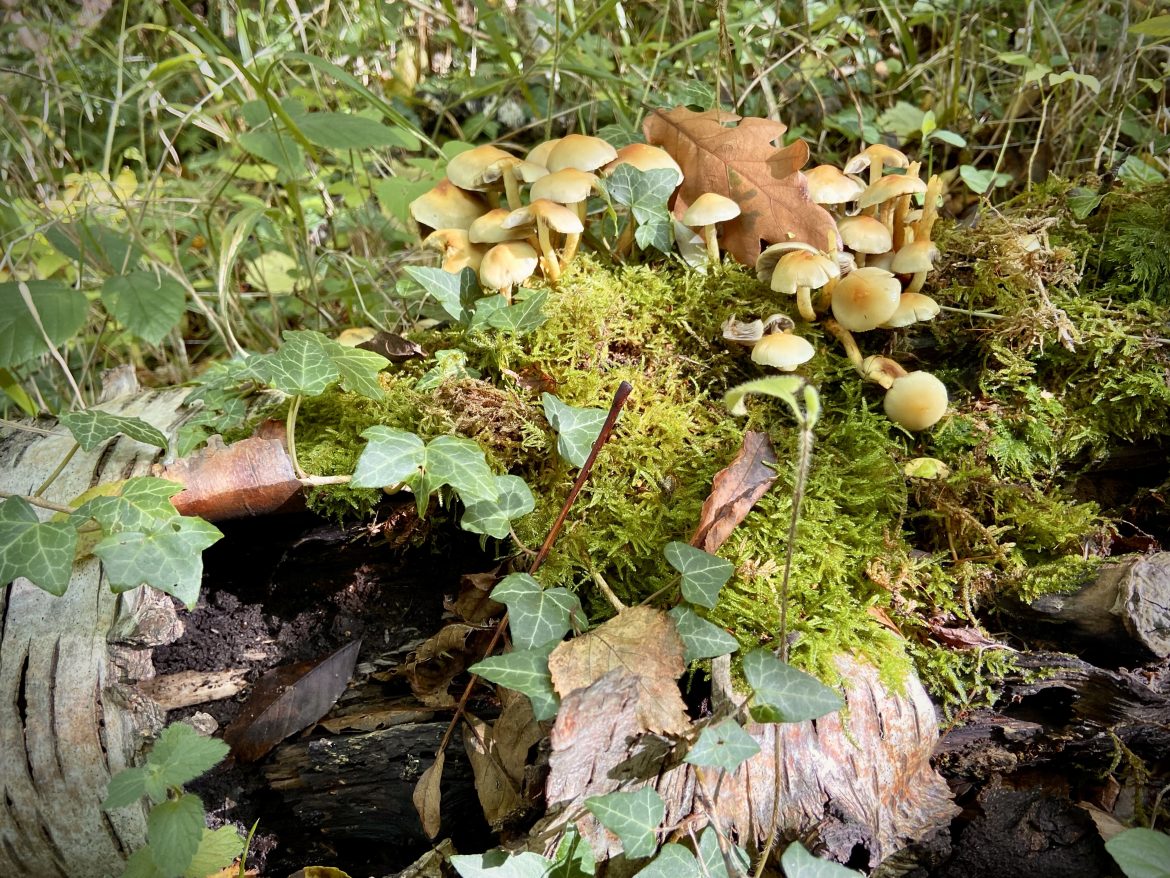On a recent woodland walk in the Welsh borders, we were struck by the variety of moss, lichen and fungi that we saw. These often overlooked organisms play an important role in the woodland ecosystem and it was wonderful to see so many of them thriving.
Mosses
Mosses are non-vascular plants, meaning that they do not have specialised tissue for transporting water and nutrients. Instead, they absorb water and nutrients directly from the air and their surroundings. This makes them well-suited to live in moist, shady environments such as woodlands.
Mosses play a number of important roles in the woodland ecosystem. They help to retain water in the soil, which can help to reduce erosion and flooding. They also provide a habitat for a variety of insects and other small animals. Mosses also help to filter pollutants from the air and water.
Lichens
Lichens are composite organisms made up of a fungus and an alga or cyanobacterium. The fungus provides a structure for the lichen, while the alga or cyanobacterium provides food. Lichens are very slow-growing and can live for hundreds or even thousands of years.
Lichens are also well-suited to live in moist, shady environments. They are found all over the world, from the tropics to the Arctic. Lichens play a number of important roles in the woodland ecosystem. They help to break down rocks and minerals, which can release nutrients into the soil. They also provide a food source for a variety of insects and other small animals. They also help to filter out pollutants from the air.
Fungi
Fungi are a diverse group of organisms that includes mushrooms, toadstools, yeasts and moulds. Fungi play an important role in the decomposition of organic matter, which helps to release nutrients back into the soil. They also form symbiotic relationships with many plants, including trees, which helps the plants to absorb nutrients from the soil.
A variety of fungi can be found in woodlands. Some fungi, such as chanterelles and truffles, are edible and prized by gourmets. Other fungi, such as death caps and fly agaric, are poisonous.
The roles of moss, lichen, and fungi in nature
Moss, lichen, and fungi play a number of important roles in nature, including:
- Decomposition: Moss, lichen, and fungi help to decompose organic matter, such as dead leaves, branches, and animals. This decomposition process releases nutrients back into the soil, which can be used by plants.
- Soil health: Moss, lichen, and fungi help to improve soil health by retaining water, increasing aeration, and adding organic matter.
- Water filtration: Moss, lichen, and fungi can help to filter pollutants from the air and water.
- Habitat: Moss, lichen, and fungi provide a habitat for a variety of insects and other small animals.
- Food: Some fungi are edible and provide a food source for humans and other animals.
Here are some examples of the moss, lichen, and fungi that we saw on our walk:





Mosses
- Common haircap moss (Polytrichum commune)
- Bank haircap moss (Polytrichum formosum)
- Sphagnum moss (Sphagnum spp.)
- Feather moss (Hylocomium splendens)
Lichens
- Tree lungwort (Lobaria pulmonaria)
- Oakmoss (Evernia prunastri)
- Old man’s beard (Usnea spp.)
- Dog lichen (Peltigera canina)
Fungi
- Chanterelle (Cantharellus cibarius)
- Fly agaric (Amanita muscaria)
- Death cap (Amanita phalloides)
- Honey fungus (Armillaria mellea)
- Bracket fungi (various species)
If you are lucky enough to live near a woodland, we encourage you to take a walk and explore the diversity of moss, lichen and fungi that can be found there.
